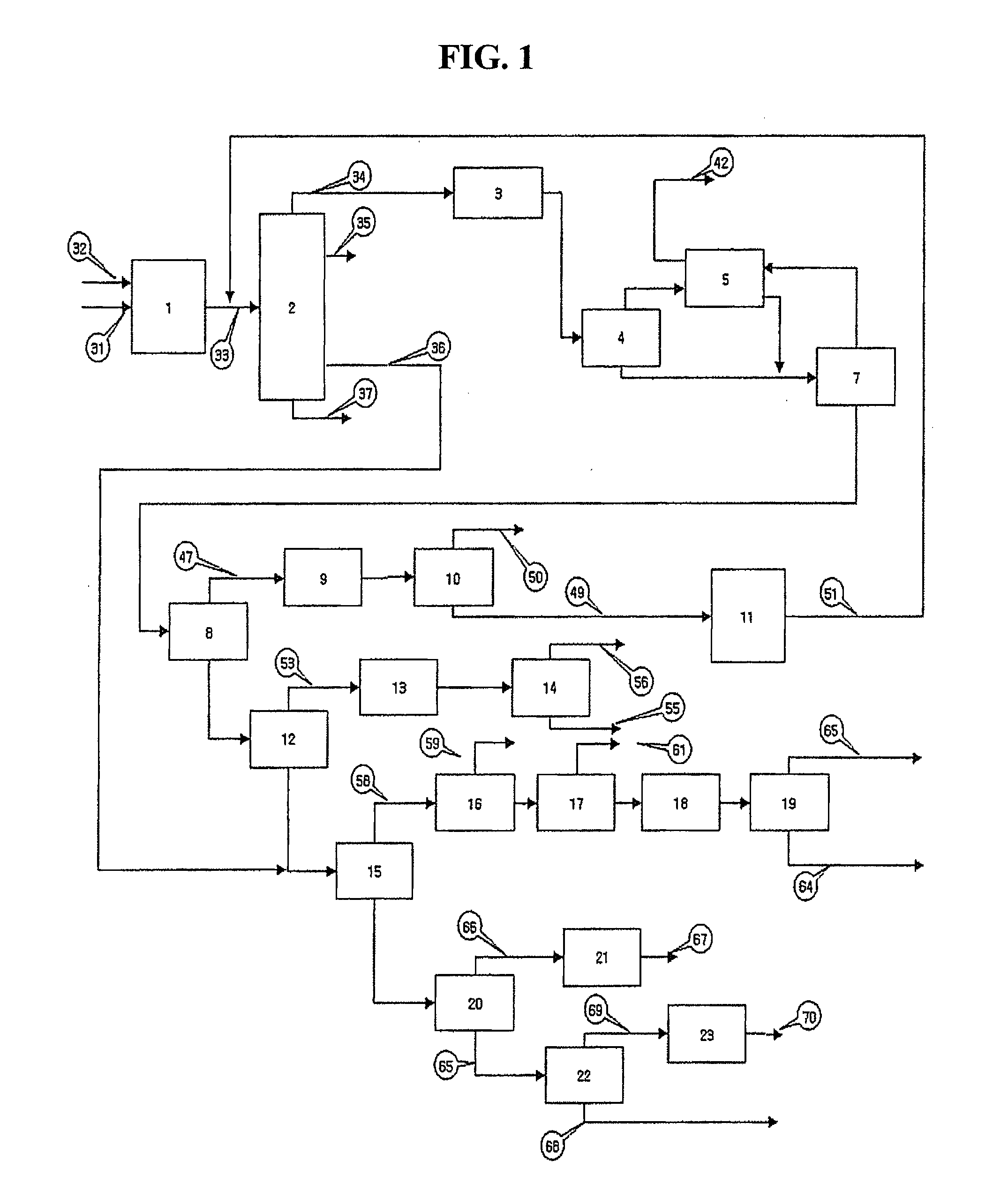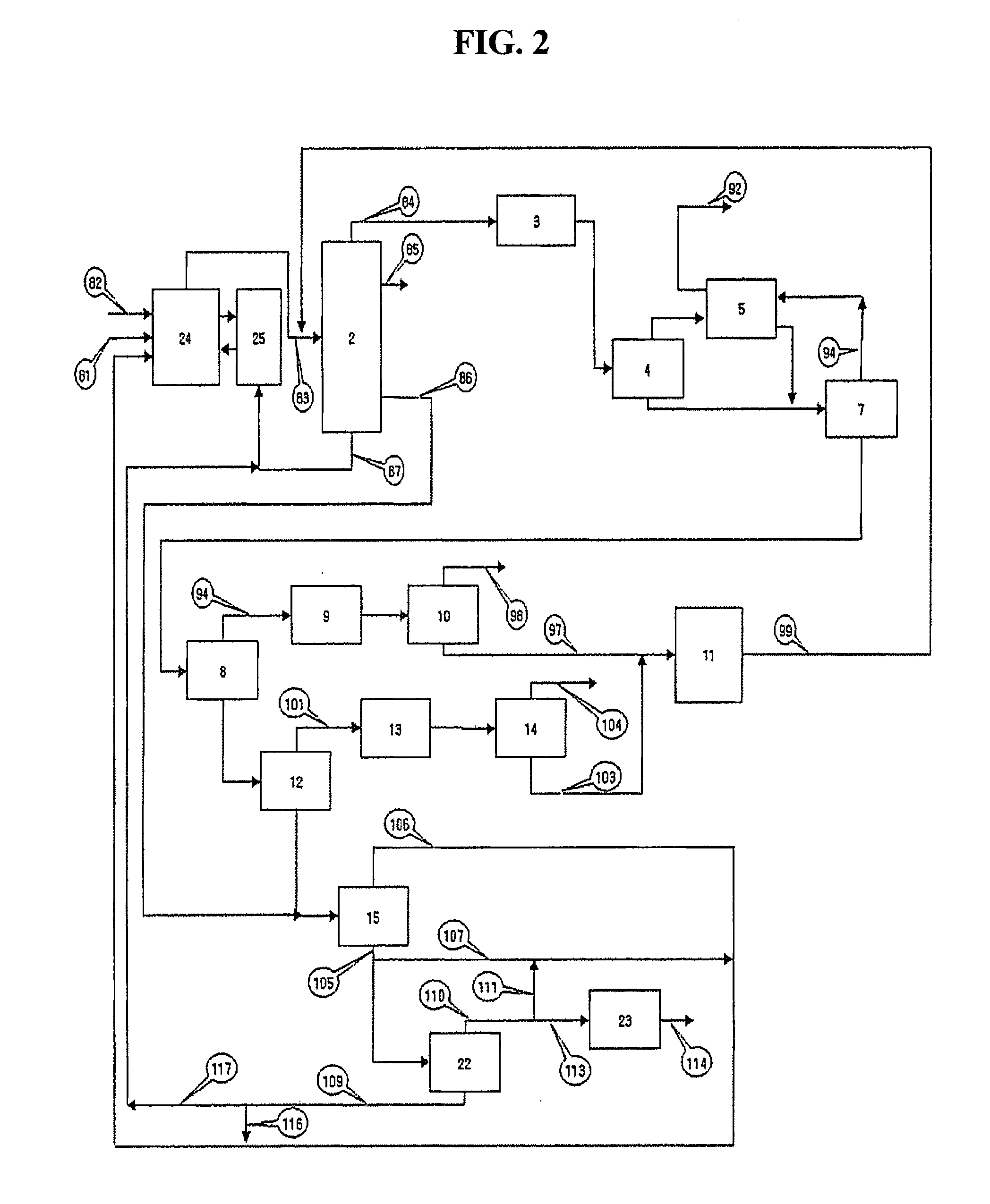Process for increasing production of light olefins from hydrocarbon feedstock in catalytic cracking
a technology of hydrocarbon feedstock and catalytic cracking, which is applied in the direction of hydrocarbon oil treatment products, organic chemistry, chemistry apparatus and processes, etc., can solve the problems of shortening the production cycle of a process, olefin components of 4 carbon atoms or more to a thermal cracking reactor entail no economic advantage, and low economic value of olefins having 5 carbon atoms or more, etc., to achieve the effect of increasing
- Summary
- Abstract
- Description
- Claims
- Application Information
AI Technical Summary
Benefits of technology
Problems solved by technology
Method used
Image
Examples
example 1
[0058] Using the results of Comparative Example 3, the performance of the overall process according to the present invention was examined. The overall process performance was examined using computer simulation. Also, the performance of the recycling furnaces using ethane and propane as feedstock was examined using the existing process data, and the results shown in Table 7 below were obtained.
TABLE 7Composition (wt %) ofComposition (wt %) ofreaction product fromreaction product fromrecycling furnace usingrecycling furnace usingethane as feedstockpropane as feedstockMethane4.218.9Ethylene51.935.6Ethane34.52.8Propylene1.216.7Propane0.116.3C42.33.7C50.31.1C6 or more1.11.6Others4.43.3
[0059] The overall process yield is as shown in Table 8 below.
TABLE 8Overall process yield(wt %)Methane17.3Ethylene34.7Ethane0.0Propylene24.6Propane0.0C40.0C50.0C6 or more20.5Others2.9
[0060] As could be seen in Table 8, the production yield of ethylene and propylene was 59.3 wt %, which is much higher t...
PUM
| Property | Measurement | Unit |
|---|---|---|
| boiling point | aaaaa | aaaaa |
| temperature | aaaaa | aaaaa |
| weight ratio | aaaaa | aaaaa |
Abstract
Description
Claims
Application Information
 Login to View More
Login to View More - R&D
- Intellectual Property
- Life Sciences
- Materials
- Tech Scout
- Unparalleled Data Quality
- Higher Quality Content
- 60% Fewer Hallucinations
Browse by: Latest US Patents, China's latest patents, Technical Efficacy Thesaurus, Application Domain, Technology Topic, Popular Technical Reports.
© 2025 PatSnap. All rights reserved.Legal|Privacy policy|Modern Slavery Act Transparency Statement|Sitemap|About US| Contact US: help@patsnap.com



